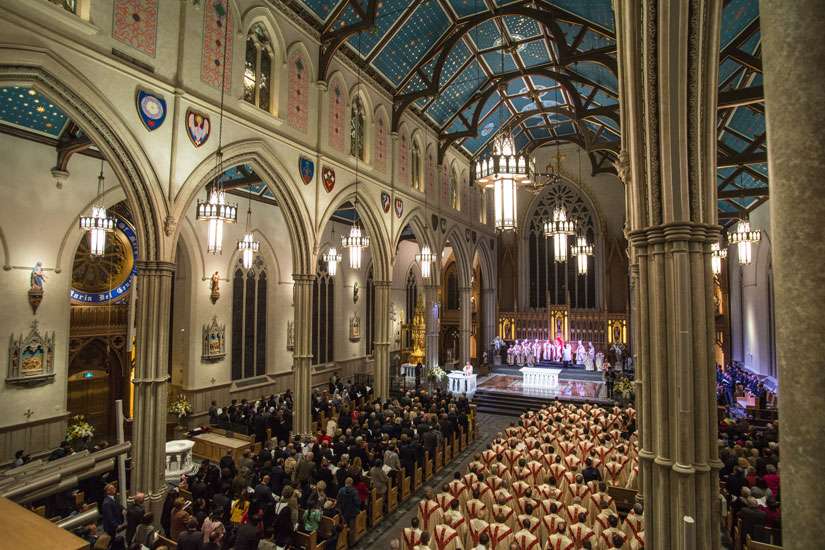In a rite that dates back more than 1,000 years, Collins rubbed oil into the cathedral’s altar and walls, blessed holy water and sprinkled it on the people and the building, lit up the sanctuary and celebrated the Eucharist.
“Lord, fill this place with your presence,” began the collect for a Mass and rededication ceremony attended by a church packed with nearly 1,300 invited guests.
Collins preached on the life of Toronto’s first bishop, who died before his cathedral could be built while ministering to Irish refugees in 1847. The fever sheds that once stood at the foot of Bathurst Street, where Bishop Michael Power contracted typhus from sick and dying Irish immigrants, is the first symbol of the martyr-bishop’s life, said Collins.
That vision of a bishop in service to the poor and marginalized is better understood when paired with the cathedral Power hoped to build, he said. St. Michael’s Cathedral is the second symbol of Power’s life.
“The glorious vision of the heavenly Jerusalem here for us once we have left the fever sheds of this life…. That vision is made incarnate in this cathedral,” Collins said.
Before dismissal at the end of Mass, Collins officially announced that the Holy See had declared St. Michael’s Cathedral a basilica – a recognized site of pilgrimage.
Collins repeated his hope that the restored, renewed and rebuilt cathedral in the heart of downtown Toronto will be “a sign of faith in a civilization too often lost in confusion.”
“In this cathedral, we celebrate the sacred mysteries of faith,” he said. “We find life-giving water in the desert.”
Collins was to celebrate a Mass of thanksgiving on Friday at noon for the thousands of workers who have laboured on the cathedral since 2011. The Mass will be followed by a street party on Bond Street outside St. Michael’s.


